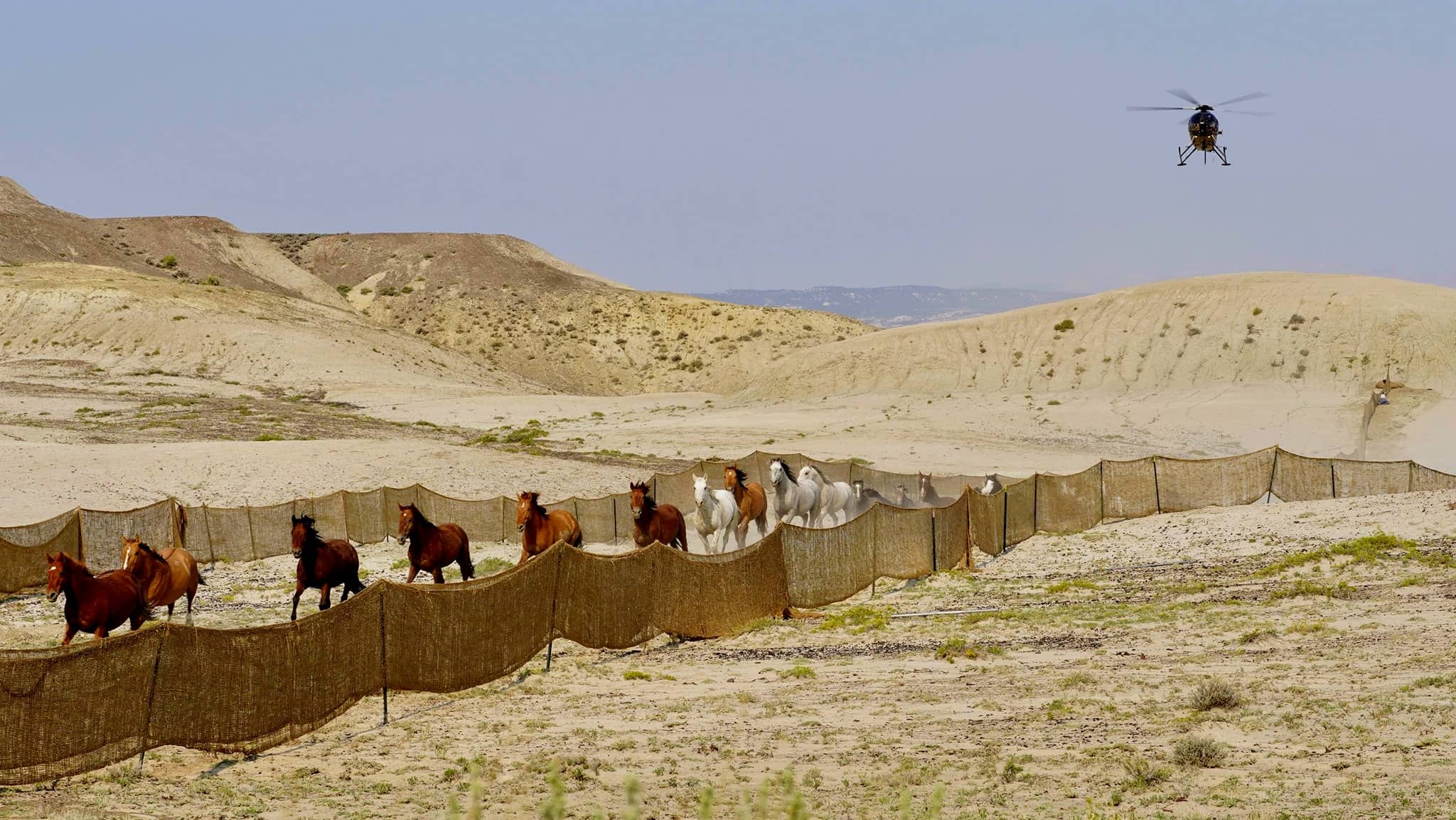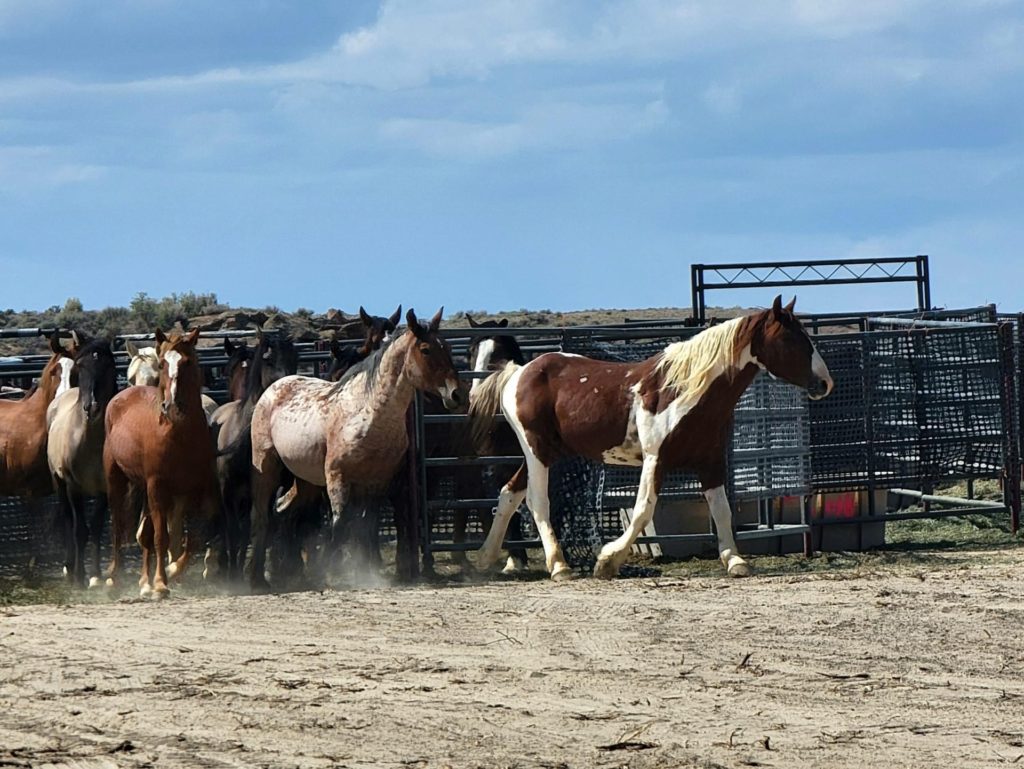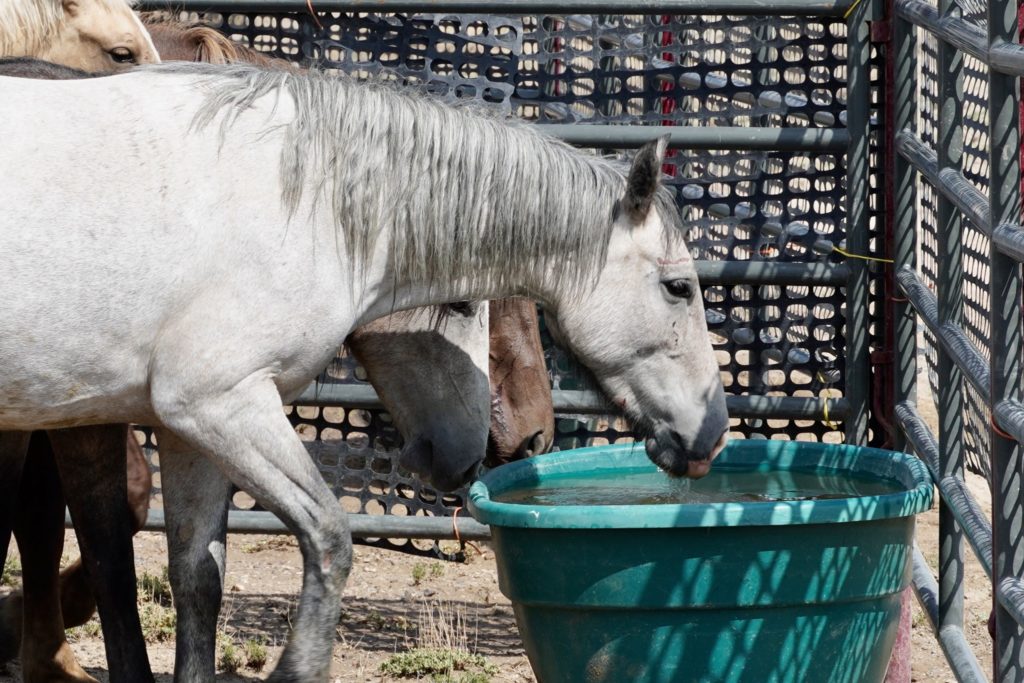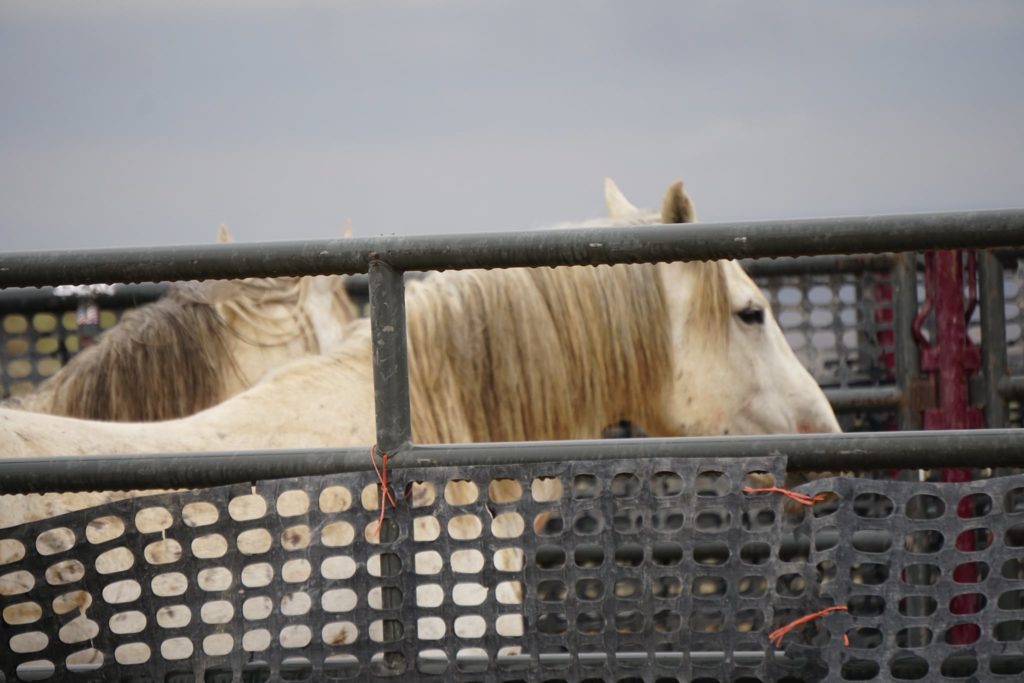

Update on Sunday, Sept. 12
The final tally of wild horses that will stay up in Sand Wash Basin will end up at about 268. There is a plus/minus margin of 10% but that’s what the BLM is saying after the recent gathering operations. And that’s about 100 more than they had planned leaving up there. A total of 667 were gathered; 49 of those were released back with the others. The rest were taken down to Canon City to be checked and put up for adoption. The gathering operation up in north Moffat County will wrap up this week.
Link to BLM’s numbers on the gather at Sand Wash Basin
Forty-nine horses were released back into Sand Wash on Saturday. One that was supposed to be released had a cancerous eye that they think may be genetic so that horse was taken down to Canon City for evaluation. Three other horses went to the Spring Creek herd.
The Sand Wash Advocacy Team will be doing a final count on how many horses remain in and outside of the Herd Management Area once the BLM gather is over.

UPDATE ON TUESDAY, Sept. 7
79 more horses were gathered Tuesday up at Sand Wash Basin in north Moffat County. That’s now 501 horses out of about 900 wild horses that have been gathered because of overpopulation and lack of water and foliage up there. The gathering continues today. The horses are headed to Canon City where they will be evaluated and put up for adoption.
UPDATE ON MONDAY, Sept. 6
The gathering of wild horses continues up at Sand Wash Basin in north Moffat County Tuesday. Ninety-three horses were gathered on Monday, even though it was a holiday. That’s 26 stallions, 54 mares, and 13 foals. Here is Chris Maestas with the Bureau of Land Management.
So far, 422 of the about 900 wild horses have been gathered. They’re being taken down to Canon City because of the drought and lack of water and foliage up at Sand Wash Basin which is in north Moffat County. The horses will be evaluated and put up for adoption.

UPDATE THURSDAY, Sept. 2
A very rainy morning in the Sand Wash Basin up in Moffat County meant a late start for the Bureau of Land Management Wednesday, in rounding up the wild horses there. When it was over, they collected 22 studs, 32 mares, and 11 foals for a total of 65 horses. One of the gray studs jumped the fence and is free again. We spoke with Chris Maestas with the BLM late Wednesday night.
There won’t be any gathering of the wild horses at Sand Wash Basin Thursday but it will resume on Friday.
You can see how many horses are gathered each day on the BLM.Gov website. It is updated nightly.
The Herd Management Area is about 45 miles west of Craig in Moffat County. It’s about 158,000 acres, with close to 900 horses on it.
More from the BLM website:
Drive trapping overview:
- One or more temporary corrals will be established to create a holding area.
- Temporary wings are then established funneling wild horses into the temporary corral(s). These locations are generally selected to coincide with already established roads or trails that wild horses are likely to follow naturally.
- Drive trapping guides wild horses utilizing a pressure and release method to herd wild horses toward the trap area; wild horses are grouped together and slowly moved toward the trap at a pace of the slowest wild horse.
- Once wild horses reach the wings, a domestic horse, also known as a Prada, Judas, or guide horse is released to encourage the wild horses to follow it into the trap. The helicopter will also drop in elevation and get only close enough to encourage the wild horses to continue to move toward the corral. (The wild horses often begin running at this point, which is also the point they typically come into view of any observers, which can lead to the impression the wild horses were “on the run” the whole time.)
- Once the wild horses are in the corral, the gate is shut to capture the wild horses in the small corral.
- Once enough wild horses are gathered at the trap, wild horses will be transported to a temporary holding corral either by trucks, stock trailers, or on semi-trucks depending on the number of wild horses being gathered.
- Once at holding, wild horses would be separated by age and sex into the appropriate pens within holding. These pens may consist of wet mares/foals, dry mares, studs, young mares, young studs, and animals that may be released after gather operations have been completed.
The BLM plans to gather approximately 783 excess wild horses, removing approximately 733 wild horses for future adoption or sale, and returning approximately 50 wild horses back onto the HMA. Approximately 25 mares will receive fertility control before being returned to the HMA. The gather is expected to last approximately 14-25 days.
Adoption Information:
The wild horses from this gather will be made available for adoption though the Canon City facility once we have removed our target number or have enough wild horses available for adoptions. Horses may also be available through other adoptions or training programs. We will post adoption events on our local BLM and national program web pages and alert local media.
The Adoption Incentive Program provides up to $1,000 to adopt an untrained wild horse or burro from the BLM. The goal of the program is to reduce BLM’s recurring costs to care for unadopted and untrained wild horses and burros while helping to enable the BLM to confront a growing over-population of wild horses and burros on fragile public rangelands. For more information on the Adoption Incentive Program, visit https://www.blm.gov/programs/wild-horse-and-burro/adoptions-and-sales/adoption-incentive-program.
A new Online Corral website provides opportunities to adopt or purchase a wild horse or burro on the Internet and have them delivered to a pick-up location near you.
Background:
The Sand Wash Basin Herd Management Area (HMA) located about 45 miles west of Craig in Moffat County. The Sand Wash Basin HMA is about 158,000 acres – about 155,000 acres of public land, 2,000 acres of private land, and 840 acres of state land. There are an estimated 896 wild horses in and around the Sand Wash Basin HMA – approximately 746 wild horses within the HMA and 150 excess wild horses outside the HMA. The Appropriate Management Level (AML) for the HMA is between 163 and 362 wild horses.
Additional gather operations may take place in areas outside the HMA on public, state, and/or private lands where wild horses have moved in search of food and water. This management action is intended to prevent starvation and dehydration of wild horses due to exceptional drought that has further limited forage production and water resources.